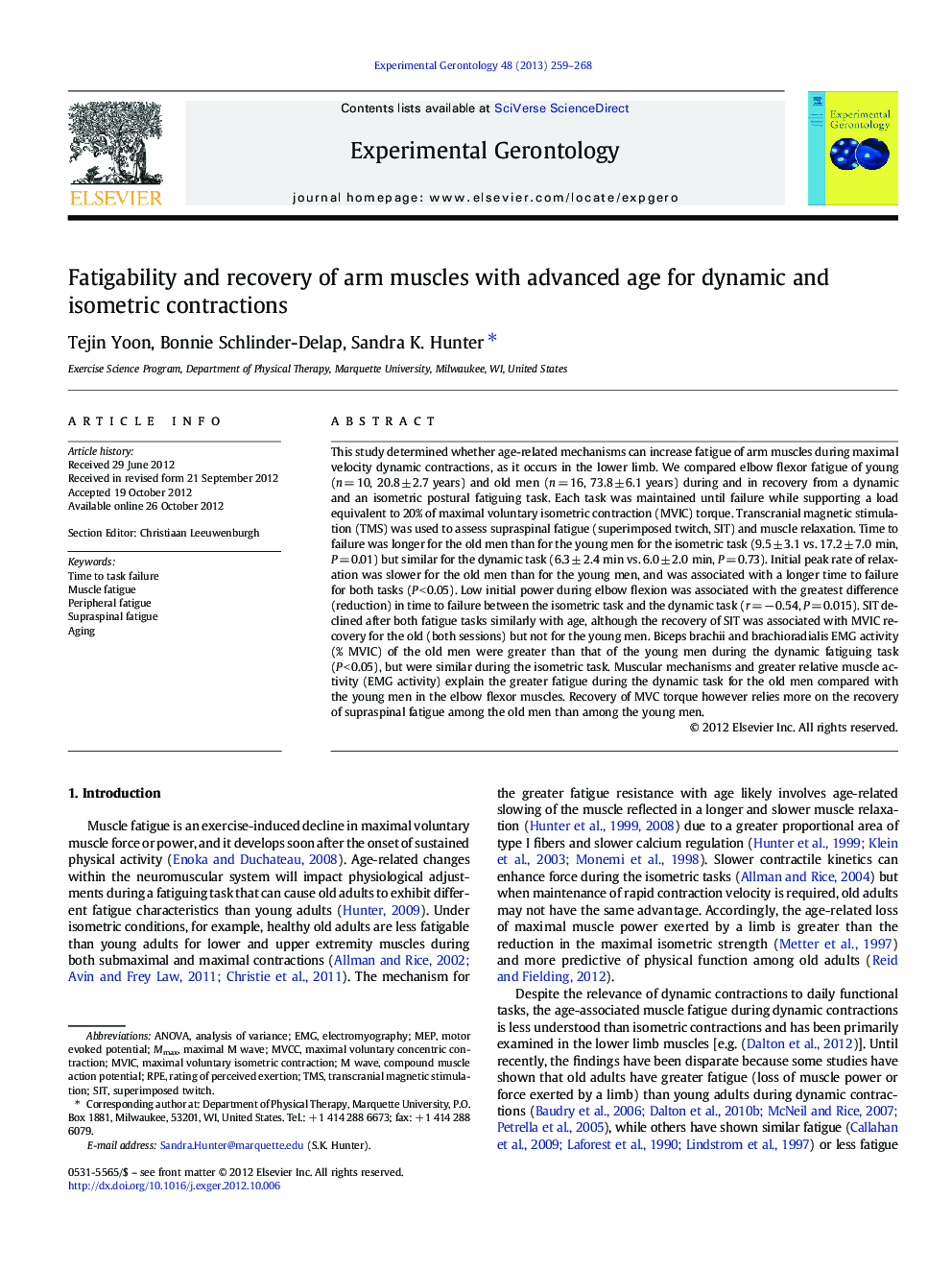| Article ID | Journal | Published Year | Pages | File Type |
|---|---|---|---|---|
| 1906388 | Experimental Gerontology | 2013 | 10 Pages |
This study determined whether age-related mechanisms can increase fatigue of arm muscles during maximal velocity dynamic contractions, as it occurs in the lower limb. We compared elbow flexor fatigue of young (n = 10, 20.8 ± 2.7 years) and old men (n = 16, 73.8 ± 6.1 years) during and in recovery from a dynamic and an isometric postural fatiguing task. Each task was maintained until failure while supporting a load equivalent to 20% of maximal voluntary isometric contraction (MVIC) torque. Transcranial magnetic stimulation (TMS) was used to assess supraspinal fatigue (superimposed twitch, SIT) and muscle relaxation. Time to failure was longer for the old men than for the young men for the isometric task (9.5 ± 3.1 vs. 17.2 ± 7.0 min, P = 0.01) but similar for the dynamic task (6.3 ± 2.4 min vs. 6.0 ± 2.0 min, P = 0.73). Initial peak rate of relaxation was slower for the old men than for the young men, and was associated with a longer time to failure for both tasks (P < 0.05). Low initial power during elbow flexion was associated with the greatest difference (reduction) in time to failure between the isometric task and the dynamic task (r = − 0.54, P = 0.015). SIT declined after both fatigue tasks similarly with age, although the recovery of SIT was associated with MVIC recovery for the old (both sessions) but not for the young men. Biceps brachii and brachioradialis EMG activity (% MVIC) of the old men were greater than that of the young men during the dynamic fatiguing task (P < 0.05), but were similar during the isometric task. Muscular mechanisms and greater relative muscle activity (EMG activity) explain the greater fatigue during the dynamic task for the old men compared with the young men in the elbow flexor muscles. Recovery of MVC torque however relies more on the recovery of supraspinal fatigue among the old men than among the young men.
► We examined age-related fatigue from maximal velocity dynamic contractions of arm muscles in men. ► Age-related fatigue resistance with a static contraction was diminished for a dynamic task. ► Muscular mechanisms explained the age-related differences in fatigue. ► Old men had less efficient muscle activation strategy during the dynamic fatigue task. ► Supraspinal fatigue contributed to the force reduction in the recovery of fatigue for the old men.
